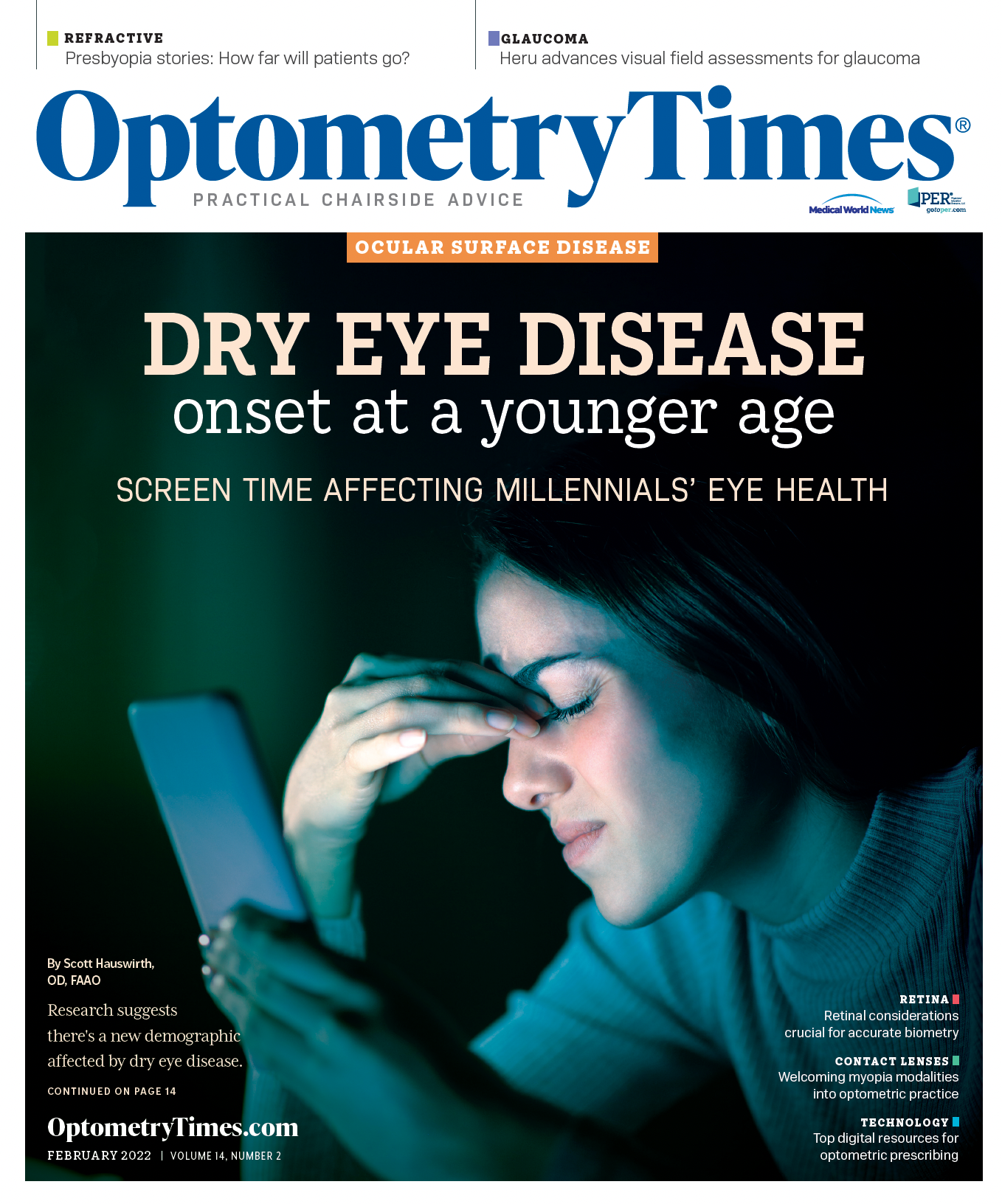My presbyopia story: How far would your patients go?
Physicians share tales of creative workarounds to cope with this condition.

Sure it’s a cliché, but it fits: The struggle is real when it comes to presbyopia. It is no secret that patients hate presbyopia—not only is it a sign of aging, but it is also a huge inconvenience.
With 128 million presbyopes in the United States, the condition is ubiquitous and will only become more so.1-3
Consider this: Millennials are now starting to enter the “presbyopia zone.”
In a survey conducted last summer of 1,000 patients aged 40 to 55 years reporting near vision issues, 65% of respondents said they were not prepared to have their eyesight worsen as they got older, and 25% admitted that they were in denial about their worsening vision.4
With presbyopia-correcting pharmaceuticals poised to shake up the landscape, optometrists have an exciting opportunity to educate their frustrated patients about the condition and offer new treatment options.
In the meantime, enjoy these tales of the creative and interesting workarounds patients have devised to cope.
Brujic

Mile Brujic, OD
Premier Vision Group (Bowling Green, Ohio)
My first story is an image.
Picture this: a patient sitting in my chair with a pair of reading glasses suspended around her neck, a second pair of glasses in her hair (think of how someone would wear sunglasses), and a third pair low on her nose. She was looking at her cell phone when I walked into the room.
When I asked her why she had the 3 pairs of glasses, she said she was afraid that she might lose a pair, so she always has 2 as backup!
A new patient, a 60-year-old man, is in the exam chair for his first eye exam.
When I asked if he used glasses to read, he answered, “Nope.”
The exam revealed emmetropic distance correction with the need for near correction. When I asked him how he reads without glasses to help, he replied, “Oh, I don’t read.”
Wruble

Rachael Wruble, OD
Belmont Eye (Belmont, North Carolina)
A very good friend of mine called me at 6 AM and said she was putting on makeup and could not see the details in her face anymore.
She explained she was having a panic attack and needed me at the office as soon as possible because it might be a brain tumor.
Mind you, this friend turned 40 years old 2 weeks prior.
She was the first person in our group of friends to hit that milestone, and no one else had experienced this. Fortunately, after education and some comforting, she understood what was happening.
She said I better make a miracle happen because she is not going to look old and carry reading glasses!
James

Neena James, OD
20/20 Eye Care (Huntsville, Alabama)
All too often I see patients (or just people out and about) wearing 2 pairs of glasses at the same time—OTC reading glasses over their distance prescription glasses or, even worse, over their nice progressive prescription glasses.
My staff and I jokingly refer to OTC readers as “cheaters” and joke that there should be a hidden-camera realty show calling people out on how silly they look with them sometimes. It makes me cringe to see husbands and wives or friends sharing reading glasses or folks borrowing restaurant readers. Yuck!
I see men who have—clearly, just accidentally—grabbed their wives’ readers that are purple leopard print or have bedazzled temples.
But hey, they can’t see up close to notice the difference anyway. I tell folks to quit playing “reader roulette” with all the various-power OTC readers they leave lying around
Coats

Jade Coats, OD
McDonald Eye Associates (Rogers, Arkansas)
One of my patients recently told me how presbyopia totally ruined a great moment. She was browsing her favorite retail store and found the cutest shoes on sale for only $110. She got to the checkout excited to make the purchase, but her credit card was declined.
While still in the store, she almost immediately received a phone call from her bank informing her of a purchase attempt for more than $1100 and wanting to verify someone had not stolen her card. The shoe sales lady tapped her on the shoulder to show her the price tag (at a distance).
She missed an extra zero because she forgot to bring her reading glasses! She did not get the shoes.
References
1. American Optometric Association. Optometric clinical practice guideline: care of the patient with presbyopia. March 20, 1998. Updated 2006. Accessed December 12, 2021. https://my.ico.edu/file/CPG-17---Presbyopia.pdf
2. Zebardast N, Friedman DS, Vitale S. The prevalence and demographic associations of presenting near-vision impairment among adults living in the United States. Am J Ophthalmol. 2017;174:134-144. doi:10.1016/j.ajo.2016.11.004
3. Data profiles 2014. United States Census Bureau. Accessed December 12, 2021. https://www.census.gov/acs/www/data/data-tables-and-tools/data-profiles/2014/
4. Allergan. Americans are frustrated by unexpected blurry near vision issues, a new survey reveals. September 27, 2021. Accessed January 3, 2022. https://news.abbvie.com/news/press-releases/americans-are-frustrated-by-unexpected-blurry-near-vision-issues-new-survey-reveals.htm

Newsletter
Want more insights like this? Subscribe to Optometry Times and get clinical pearls and practice tips delivered straight to your inbox.